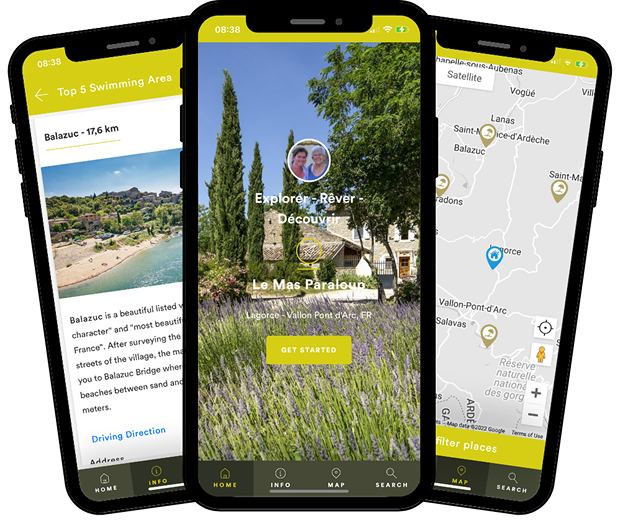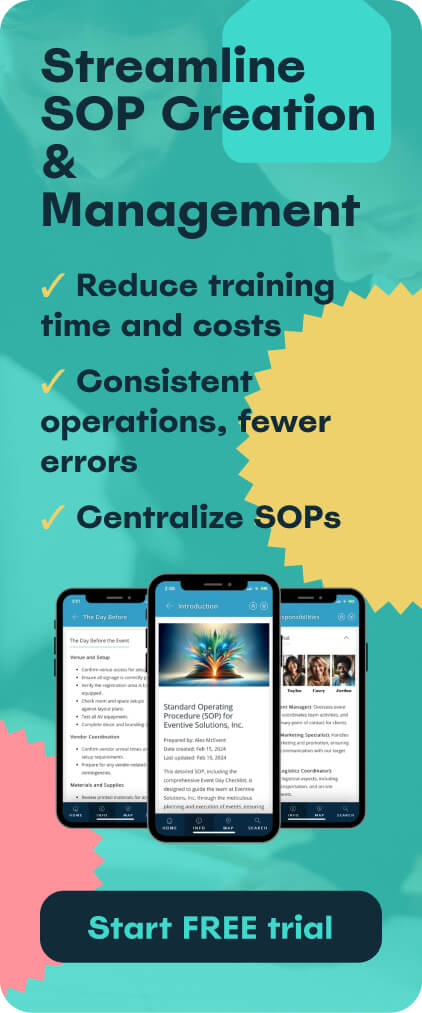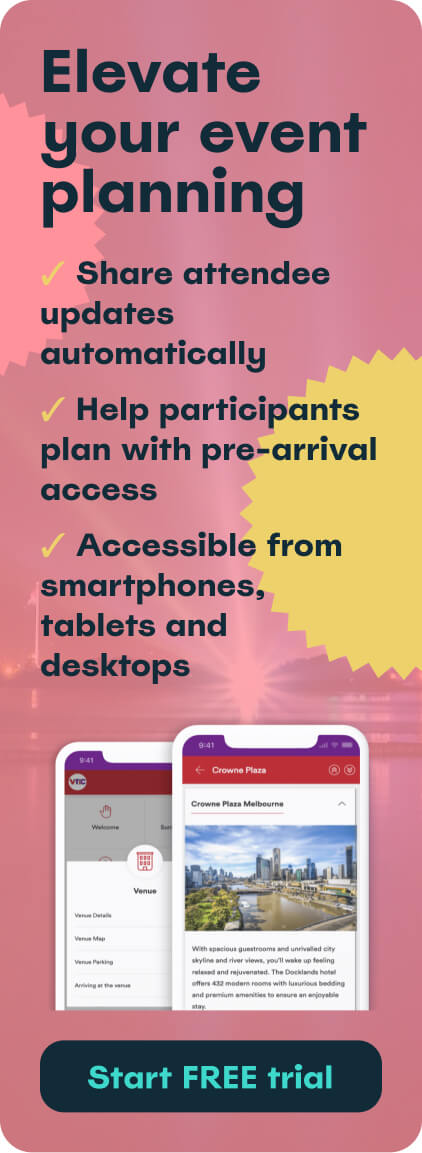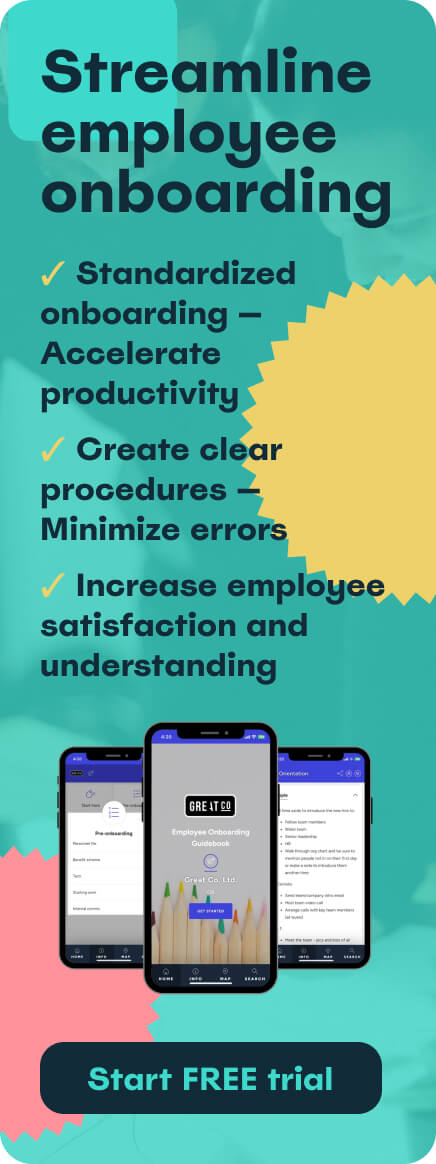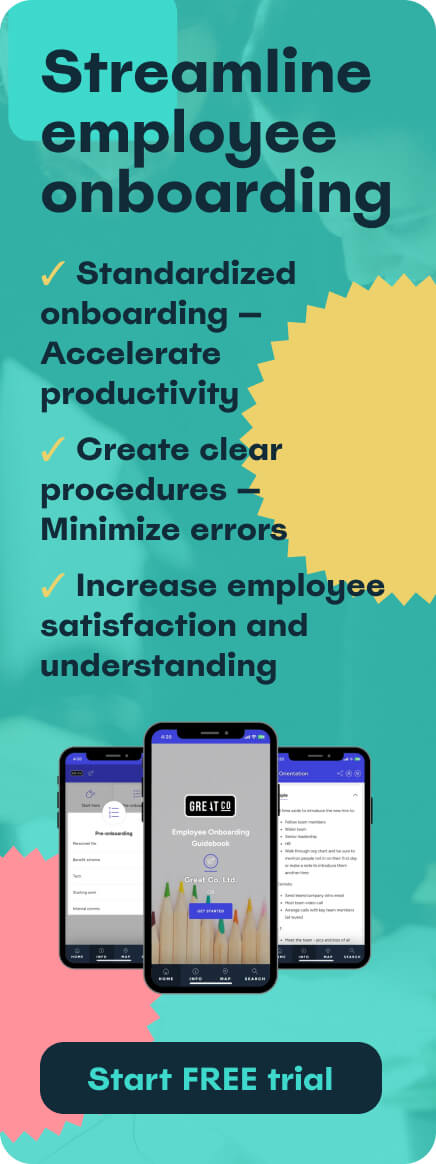Standard Operating Procedures (SOPs) are the backbone of any well-organised business, ensuring consistency, efficiency, and quality in every task. Whether you're a startup founder, a seasoned manager, or part of a small team, creating effective SOPs is a powerful way to eliminate guesswork, save time, and empower your staff.
This guide will walk you through everything you need to know about SOPs, from understanding their core components to writing your own and implementing them effectively.
- What is SOP (Standard Operating Procedure)?
- Types of standard operating procedures
- What is an SOP template?
- Why are standard operating procedures important?
- What should an SOP template contain?
- How to write a standard operating procedure
- SOP examples and scenarios
- Tips and best practices for writing SOPs
- Common mistakes to avoid in SOPs
- 10 free SOP templates for founders, managers and small businesses
- Frequently asked questions
Want to create effortless SOPs? Try Touch Stay for free!
What is SOP (Standard Operating Procedure)?
A Standard Operating Procedure, or SOP, is a set of step-by-step instructions compiled by a company to help employees carry out routine operations. It is a formal document that provides clear and concise guidelines for performing a task, ensuring the process is completed consistently and safely.
SOPs are crucial because they transform institutional knowledge—the expertise stored in people's heads—into a tangible, shareable asset. They serve as a single source of truth, ensuring every team member follows the same process. From a simple daily checklist to a complex technical manual, SOPs are used across every industry.
Pro tip: Confused about SOPs? Find out what is a Standard Operating Procedure (SOP)
Types of standard operating procedures
SOPs can be categorised based on their purpose, format, and complexity. Choosing the right type for a given process is essential for clarity and usability. While there are numerous variations, the following are some of the most common types you'll encounter in the workplace.
- Policy and procedure SOPs:
These documents outline a company's policies and the procedures for adhering to them. They are often high-level and focus on compliance and governance. - Operational SOPs:
These are the most common type, detailing how to perform a specific task or run a particular operation. - Safety and compliance SOPs:
These are legally required in many industries. They are designed to prevent accidents and ensure regulatory compliance.
What is an SOP template?
An SOP template is a pre-designed document that provides a structured framework for creating your own Standard Operating Procedures. Instead of starting from a blank page, you can use a template to ensure you include all the necessary components in a logical order. Using a template saves time, ensures consistency across all your SOPs, and makes it easier for new employees to understand and follow the instructions.
Templates often come in various formats to suit different types of procedures. Choosing the right format is critical for making your SOP as effective as possible.
Formats of standard operating procedures
- Checklist format:
This is the simplest SOP format, ideal for routine tasks like a morning store opening routine or a health and safety inspection. - Step-by-step format:
This format is ideal for straightforward, sequential tasks. It's a simple, numbered list of actions to be taken in a specific order, for example, how to process a customer refund. - Hierarchical format:
Also known as a flow chart, this is a more complex format for procedures with multiple decision points. It uses flowcharts and diagrams to visually map out a process. - The hybrid format:
For more complex procedures, a hybrid SOP combines elements of the formats above. For example, a single SOP could include a high-level flowchart followed by detailed step-by-step instructions.
Why are standard operating procedures important?
SOPs are much more than just a formality; they are a strategic asset that can transform your business. By providing clarity and structure, they enhance operational efficiency and create a foundation for consistent growth.
Benefits of standard operating procedures
- Consistency and quality control:
SOPs ensure that every task is performed in the same way, every time. This consistency leads to predictable results, higher quality outputs, and a more reliable product or service for your customers. - Increased efficiency and productivity:
With a clear SOP in place, employees spend less time asking questions and figuring out how to do a task. This reduces wasted time, allowing them to focus on their work and complete it more quickly. - Seamless employee training and onboarding:
SOPs are an invaluable training tool. New hires can use them to learn the ropes quickly and independently, reducing the burden on existing staff. This is where tools like Touch Stay can be a game-changer; digital guidebooks with SOPs make employee onboarding and training a seamless, interactive process, saving time by reducing questions and providing an easily accessible point of reference. - Reduced risk and improved safety:
In industries with strict regulations or safety protocols, SOPs are essential. They document every step to ensure compliance and reduce human error, protecting both employees and the business. - Simplified knowledge transfer:
SOPs prevent the loss of critical knowledge when an employee leaves the company. By documenting key processes, you create a lasting record of how things are done.
Pro tip: Discover how a Standard Operating Procedure helps in your workplace
What should an SOP template contain?
A great SOP template is structured to be clear, comprehensive, and easy to follow. While specific content will vary, a robust template should always include the following key components.
- Header:
The header provides essential identifying information like the document title, SOP number, and version number. - Purpose and scope:
This section explains the "why" of the SOP, outlining its objective and who it applies to. - Roles and responsibilities:
This section clearly defines who is responsible for each part of the procedure by job title or role. - Required equipment and resources:
List all the tools, software, documents, or materials needed to complete the procedure. - Step-by-step procedure:
This is the core of the SOP. The instructions should be sequential, action-oriented, and concise. Use simple language and include visuals where necessary to clarify complex steps. - Troubleshooting and common issues:
This section lists potential issues and provides a clear, easy-to-follow solution for each. - Approvals and sign-off:
This section formalises the SOP. It includes a space for relevant stakeholders to sign and date the document, indicating their approval.
How to write a standard operating procedure
Writing an SOP might seem daunting, but by following a structured, step-by-step process, you can create a clear and effective document.
- Define the process:
Identify the task you need to document. Who will use this SOP, and what is the desired outcome? - Gather the information:
Work with the person who performs the task most efficiently. Observe them, take notes, and ask questions. - Choose the format:
Based on the complexity of the task, choose the most appropriate format—checklist, step-by-step, hierarchical, or a hybrid approach. - Write the draft:
Using your chosen template, write the SOP in a clear, concise, and action-oriented voice. - Add visuals:
Integrate screenshots, photos, or flowcharts to make the instructions easy to follow. - Review and refine:
Have a colleague who is unfamiliar with the process read the SOP and attempt to follow it. - Implement and share:
Once the SOP is approved, make it accessible to everyone. For a digital-first approach, a digital guidebook like Touch Stay makes it easy to share, update, and manage your SOPs in one central location.

Want to create effortless SOPs? Try Touch Stay for free!
SOP examples and scenarios
Here are three examples of how businesses use SOPs to improve their operations.
Employee onboarding SOP
This SOP provides a structured checklist for hiring managers and HR teams. It ensures every new employee has a consistent and welcoming experience.
Customer refund process SOP
This SOP ensures that customer service representatives handle refunds consistently and correctly. It would be a hierarchical SOP with decision points.
Social media content creation SOP
For a marketing team, this SOP outlines the entire content creation and publishing workflow, from brainstorming to scheduling.

Tips and best practices for writing SOPs
Write for your audience:
Use clear, simple language that is appropriate for the person who will be using the SOP. Avoid technical jargon.
Get input from the experts:
The people doing the job are the most knowledgeable. Involve them in the process to ensure it is accurate and practical.
Include visuals:
Don't just rely on text. Screenshots, photos, and flowcharts are a powerful way to clarify complex steps and make the SOP easier to follow.
Keep it current:
An SOP is only useful if it's up-to-date. Schedule regular reviews to ensure the document reflects the current process. A digital guidebook like Touch Stay allows you to make changes instantly and ensure everyone is always working from the most recent version.
Common mistakes to avoid in SOPs
Making them too complex:
An SOP should be easy to follow. Don't include unnecessary details or information that isn't relevant to the task.
Not keeping them accessible:
An SOP is useless if no one can find it. Store all your SOPs in a centralised, easy-to-access location, such as a cloud drive or a digital guidebook.
Failing to update them:
An outdated SOP can cause more harm than good, leading to confusion and errors.
10 free SOP templates for founders, managers and small businesses
To help you get started, here is a list of free SOP templates you can download and use.
1. SweetProcess basic SOP template
A simple yet effective template that provides a foundation for any process documentation. It includes sections for purpose, scope, roles, and procedure steps.
2. Miro SOP template
This interactive template is built for collaboration, allowing teams to map out workflows visually on a digital whiteboard.

3. Zapier free SOP template
Zapier provides a collection of templates for different business functions, including HR, marketing, IT, and customer service.
4. Middlestone Microsoft Word template
A classic, downloadable Word document template that includes relevant headings and guidance to help you fill it in.

5. Notion SOP templates
Notion's marketplace offers numerous free SOP templates for various business needs, from content creation to SEO.
6. Asana SOP template
Designed for project management, this template is ideal for documenting processes that involve multiple team members and deadlines.
7. Canva SOP templates
Canva offers visually appealing templates that you can customise with your brand colours and logos.

8. Visme SOP examples and templates
Visme provides a range of free templates, including step-by-step guides, flowcharts and checklists, all of which are highly customisable.
9. Process Street SOP templates
Process Street provides pre-made checklists and workflows for a wide range of business processes, including SOPs.
10. Lucidchart SOP flowchart templates
For visual learners, Lucidchart offers various flowchart templates to map out complex decision-making processes.
Start a free trial with Touch Stay today!
You can organise all your SOPs into a beautiful, easy-to-update digital guidebook that can be accessed by your entire team on any device. It's the perfect way to transform your SOPs from static documents into a powerful, interactive tool for your business.
Frequently asked questions
While there can be more, the five main components of an effective SOP are:
- Header: Including the title, version number, and date.
- Purpose and Scope: Explaining why the procedure exists and who it's for.
- Roles and Responsibilities: Defining who is accountable for each step.
- Procedure: The core, step-by-step instructions.
- Approvals: The sign-off from relevant stakeholders.
Yes, AI can be a valuable tool for writing SOPs. You can use it to generate an initial draft, refine language, and create outlines. However, you should never rely on AI to write a final SOP on its own. It's essential to review and edit any AI-generated content to ensure it is accurate and specific to your business.
The "best" app for SOP writing depends on your specific needs.
- For simple documents: Microsoft Word or Google Docs work well.
- For collaboration: Platforms like Notion and Miro are excellent for teams to work together in real-time.
- For accessibility and user experience: A digital guidebook platform like Touch Stay is ideal. It allows you to create a beautiful, interactive, and easily accessible SOP that can be viewed on any device. It's perfect for when your team needs to access a guide on the go.
The length of an SOP should be determined by the complexity of the task, not a specific word count. A 500-word SOP is sufficient for a straightforward process, but for more intricate or critical tasks, it may not be enough. The goal is to provide enough detail for anyone to follow the procedure correctly without being overwhelmed by unnecessary information.

Ned
Ned has clocked up over 11 years in digital marketing and comms, with a strong focus on creating engaging content for a range of brands and agencies. When he’s not writing, he can be found digging for records, peering through his telescope at the night sky, or onboard his local lifeboat where he volunteers as a crewmember.
Be the first to know!
Join our newsletter for early access to:
- ✅ Free guides
- ✅ Pro tips & tricks
- ✅ Time saving tutorials
- ✅ Latest blog posts
- ✅ Checklists & templates

